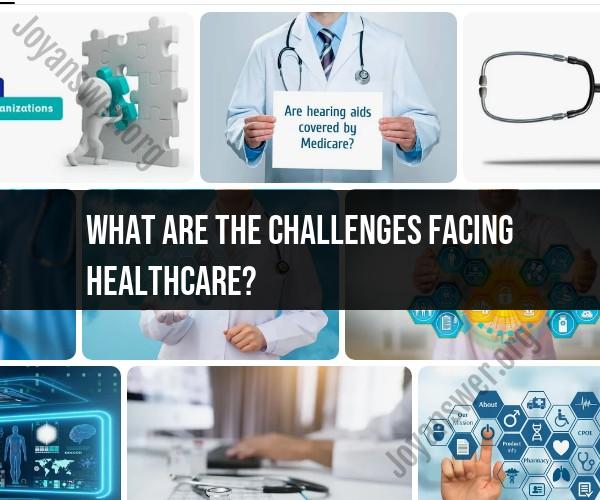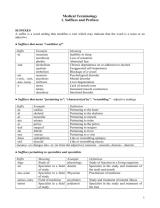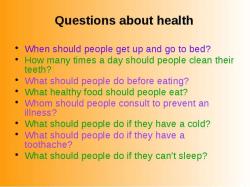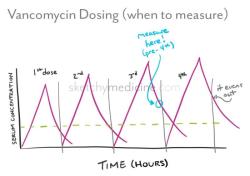What are the challenges facing healthcare?
The healthcare sector faces numerous challenges that impact the quality, accessibility, and cost of healthcare services. These challenges vary by region and are influenced by factors such as healthcare systems, technological advancements, and socio-economic conditions. Here is a comprehensive overview of some of the major challenges facing healthcare:
1. Rising Healthcare Costs:
- The cost of healthcare, including medical services, medications, and insurance, has been steadily increasing, putting a financial burden on individuals, families, and healthcare systems.
2. Access to Care:
- Disparities in access to healthcare services persist, with many people, particularly in underserved communities, facing barriers to quality healthcare.
3. Healthcare Inequality:
- Inequities in healthcare outcomes and access based on race, income, gender, and other factors remain a significant concern.
4. Aging Population:
- An aging population places increased demands on healthcare systems. The elderly often require more complex and long-term care, which can strain resources.
5. Chronic Diseases:
- The prevalence of chronic conditions such as diabetes, heart disease, and obesity is on the rise, contributing to healthcare costs and long-term care needs.
6. Mental Health:
- Mental health issues, including access to mental healthcare, are significant concerns, and they have been exacerbated by factors like the COVID-19 pandemic.
7. Physician Shortages:
- Many regions are facing shortages of healthcare professionals, including physicians and nurses, which can lead to reduced access to care.
8. Healthcare Workforce Burnout:
- Healthcare professionals often face high levels of burnout and stress, which can affect the quality of care and the availability of providers.
9. Healthcare Information Technology:
- The transition to electronic health records and the management of health information technology have introduced challenges related to data security, interoperability, and usability.
10. Patient Data Privacy:
- Safeguarding patient data and maintaining privacy is an ongoing challenge, particularly in the age of digital health records and telehealth.
11. Regulatory and Compliance Issues:
- The healthcare industry is highly regulated, and healthcare organizations must navigate a complex web of rules and regulations, which can be challenging to comply with.
12. Telehealth Integration:
- While telehealth offers opportunities for improved access to care, its integration into existing healthcare systems presents logistical, regulatory, and reimbursement challenges.
13. Drug Pricing and Access:
- High drug prices and disparities in access to affordable medications are significant issues, leading to concerns about medication affordability and adherence.
14. Healthcare Infrastructure:
- Many healthcare facilities and infrastructure systems are aging and in need of updates and modernization.
15. Global Health Threats:
- Emerging infectious diseases, like pandemics, pose a significant threat to global health and the healthcare infrastructure's ability to respond.
16. Healthcare Fraud and Abuse:
- Fraudulent activities, including healthcare billing fraud and inappropriate medical procedures, can contribute to unnecessary costs.
17. End-of-Life Care:
- Providing compassionate and cost-effective end-of-life care is a challenge for healthcare systems, and the preferences of patients and their families vary.
18. Preventive Care and Public Health:
- Emphasizing preventive care and public health measures can be a challenge, but it is vital for reducing the burden of chronic diseases and improving overall community health.
Addressing these challenges often requires a multifaceted approach involving government policies, technological advancements, education and training, and collaborative efforts among healthcare professionals, institutions, and policymakers. The goal is to improve the overall quality, accessibility, and affordability of healthcare while ensuring that it meets the diverse needs of populations around the world.
Challenges Facing Healthcare: A Comprehensive Overview
The healthcare industry is facing a number of challenges, both in the United States and around the world. These challenges include:
- Rising costs: The cost of healthcare is rising faster than inflation, making it difficult for people to afford the care they need.
- Access to care: Not everyone has access to quality healthcare, especially in underserved communities.
- Shortage of healthcare workers: There is a growing shortage of healthcare workers, including doctors, nurses, and other healthcare professionals.
- Chronic diseases: Chronic diseases, such as heart disease, cancer, and diabetes, are on the rise, putting a strain on the healthcare system.
- Technology: New technologies can improve healthcare, but they can also be expensive and difficult to implement.
- Policy: Government policies can have a significant impact on healthcare, both positive and negative.
Addressing Key Issues in the Healthcare Industry
There are a number of ways to address the key issues facing the healthcare industry. Some possible solutions include:
- Investing in prevention: Investing in prevention can help to reduce the need for costly medical treatment down the road. This could include things like public health campaigns, education programs, and access to healthy foods and exercise.
- Expanding access to care: Expanding access to care could involve expanding Medicaid, providing tax credits for health insurance, and building more clinics in underserved communities.
- Improving the efficiency of the healthcare system: The healthcare system can be made more efficient by streamlining administrative processes, reducing fraud, and using technology more effectively.
- Training more healthcare workers: More healthcare workers can be trained by increasing the number of training programs and offering financial incentives to students who choose to pursue careers in healthcare.
- Supporting research and innovation: Supporting research and innovation can lead to new treatments and cures for diseases.
The Impact of Technology, Policy, and Access on Healthcare
Technology, policy, and access all have a significant impact on healthcare. Technology can be used to improve the quality of care, reduce costs, and expand access to care. Policy can also have a major impact on healthcare, such as by determining who is eligible for health insurance and what services are covered. Access to care is also important, as people who do not have access to quality healthcare are more likely to suffer from preventable illnesses and injuries.
Strategies for Improving Healthcare Services
There are a number of strategies that can be used to improve healthcare services. Some of these strategies include:
- Using technology to improve care: Technology can be used to improve care in a number of ways, such as by providing remote care, using electronic health records, and using artificial intelligence to diagnose diseases.
- Coordinating care: Coordinating care between different healthcare providers can help to improve the quality of care and reduce costs. This could involve things like shared care plans and telemedicine.
- Empowering patients: Empowering patients to make informed decisions about their care can lead to better outcomes. This could involve things like providing patients with access to their medical records and giving them more choices about their treatment.
Navigating the Complex Landscape of Healthcare Challenges
Navigating the complex landscape of healthcare challenges can be difficult for individuals and families. There are a number of resources available to help people navigate the healthcare system, such as:
- Health insurance providers: Health insurance providers can help people to understand their coverage and find providers who are in their network.
- Government agencies: Government agencies, such as Medicare and Medicaid, can provide information about government-sponsored health insurance programs.
- Nonprofit organizations: There are a number of nonprofit organizations that provide information and assistance to people with healthcare needs.
It is also important to be an advocate for yourself or your loved ones. This means asking questions, understanding your options, and making informed decisions about your care.
By understanding the challenges facing healthcare and the strategies that can be used to improve healthcare services, individuals and families can navigate the complex landscape of healthcare and get the care they need.













